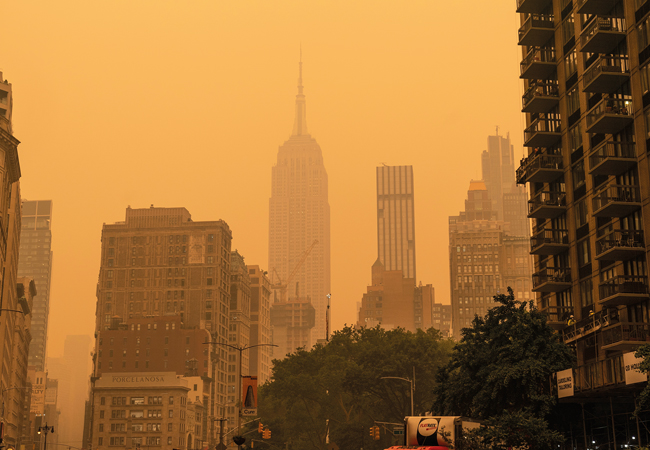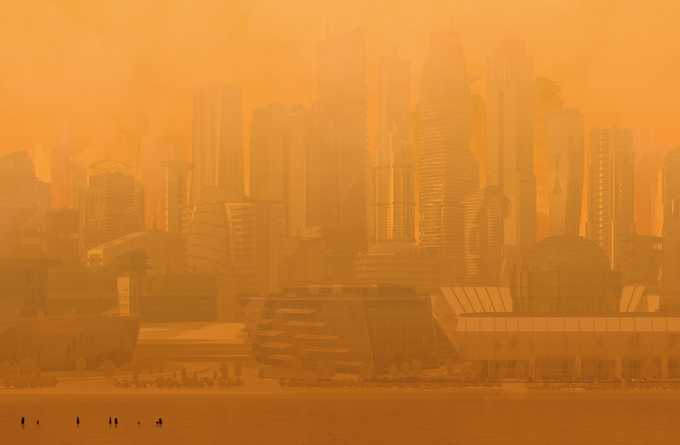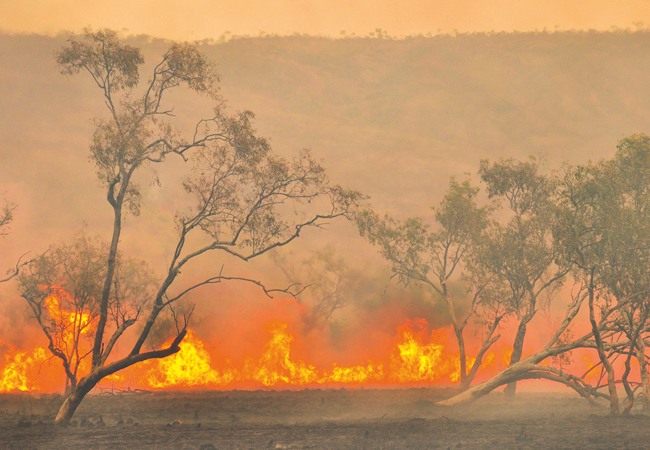
Wildfire smoke can have serious consequences for human health
As global temperatures increase, the impacts of hotter, drier weather are expected to result in more frequent heatwaves and a greater incidence of wildfires over the coming decades.
A report published in 2022 by the United Nations Environment Programme, Spreading like wildfire: the rising threat of extraordinary landscape fires, forecast that, even if greenhouse gases are reduced, there could be up to a 50% increase in wildfires across the globe by the end of the century, spanning the Arctic and central Europe to tropical rainforests and the Amazon.
Wildfires pose a growing risk to people in homes, offices and other premises through their impact on indoor air quality (IAQ) and, thereby, people’s health. Developing mitigation strategies for maintaining IAQ – including the adaptation or upgrading of air conditioning systems in buildings – is increasingly important.
Over the past two years, record temperatures in the UK and other parts of Europe, combined with long periods of intense heat, have resulted in an unprecedented incidence of severe wildfires. Only last month, a wildfire covering around 40 hectares on Rhigos mountain, in Rhondda Cynon Taf, was one of several in the region that caused significant damage and posed a potential health hazard to locals.
It is anticipated that such fires will become more prevalent; research published by Met Office scientist Matthew Perry in 2022 concluded that wildfires can be considered an ‘emergent risk’ for the UK, and he predicted a large increase in hazardous-fire weather conditions in summer that may extend into autumn. In the US, where wildfires are a perennial issue, data from the Environmental Protection Agency (EPA) suggests there have been large increases in areas burned by wildfires since the 1980s. It estimates that the average area burned in the west of the country will increase by 54% by 2050 as a result of climate change.
The health impact
A recent paper on wildfires (bit.ly/CJBerkWF) from the Indoor Air Quality (IAQ) Scientific Findings Resource Bank of the Lawrence Berkeley National Laboratory (supported by EPA funding) highlights some of the key issues for public health, and potential mitigations through ventilation interventions. In terms of health impact, wildfire smoke can cause large increases in outdoor airborne particles, as well as substantial increases in gaseous air pollutants, such as carbon monoxide, nitrogen dioxide, formaldehyde and acetaldehyde. These can spread over thousands of kilometres, which means forest fires can also have an impact in urban environments, increasing the concentration of fine particles significantly.
According to the EPA, the biggest threat from wildfire smoke is from fine particles (2.5 micrometers in diameter [PM2.5] or less). These can enter the eyes or respiratory system, where they can cause significant health problems, from irritated eyes to lung illnesses and cardiovascular problems. They can be particularly hazardous for older people, young children, and those with underlying health conditions. Researchers (Johnston et al) have estimated that landscape fires, consisting of wildfires and prescribed burns, cause 339,000 premature deaths per year globally.

Wildfire smoke can have serious consequences for human health
As wildfire smoke with fine particulates and gases can enter buildings through natural ventilation, mechanical ventilation and infiltration, preventative measures and mitigation can be effective. Steven J. Emmerich is a mechanical engineer in the Energy and Environment Division at the US’s National Institute of Standards and Technology. He says either the smoke has to be kept out or removed when it gets in. ‘Keeping smoke out can be achieved through the combination of a tight building envelope, maintaining a positive building pressure, reducing outdoor air intake to a minimum and filtering the outdoor air,’ he says.
Apart from the obvious advice of closing doors, vents and windows in the event of a wildfire, the operation of high-efficiency indoor particle filtration systems (see CIBSE air cleaning technologies guidance at www.cibse.org/knowledge) is recommended by the EPA, as well as by members of the UK’s Airbods research group. ‘Removing the PM2.5 when it gets in means using better filtration in recirculating HVAC systems,’ says Emmerich. ‘Many building owners and operators can take advantage of efforts they made to improve building filtration during Covid-19.’
Measures to consider include disabling economisers and demand-control ventilation, verifying what level of improved filtration a building’s systems can employ, and, potentially, rigging temporary filtration of outdoor air intakes.
A number of practical steps to mitigate the impact of wildfire smoke are also recommended by the EPA. If the HVAC system has a fresh air intake, this should be closed or the system turned to recirculation mode. For mechanical ventilation systems, it is important to ensure the correct pre-filters and filters are in place. A MERV 13 filter or one with as high a rating as the system’s fan and filter slot can accommodate is recommended by the EPA (see bit.ly/CJEPAfilter). Filters that can stop finer particulates generated by wildfires – for example, 1 micrometers (PM1) – are available from specialist filtration solution suppliers.
If the building operates an evaporative cooler, this should be avoided in smoky conditions, says the EPA, as it can draw more smoke inside the building. Other options, such as fans or window air conditioners, should be considered.
A portable air cleaning solution can also be effective in mitigating the impact of smoke. Among studies mentioned in the Berkeley Lab paper, two found that air cleaners in homes reduced PM2.5 by around 65%, and by 63% to 88%, during wildfires.
Preparing for the impact of wildfires is very important, and ASHRAE has published a framework that Emmerich says offers practical help with an often overlooked aspect – making a plan. ‘Part of that is returning to normal operations after the wildfire smoke episode is over,’ he says.
Australian wildfires: health impacts

Australia’s ‘Black Summer‘ of wildfires in 2019-20 was one of the worst wildfire seasons on record, causing immense destruction – and the full impact on health from smoke is still being assessed by researchers. The fires in eastern Australia consumed 24 million hectares of land and killed 33 people, with the resulting smoke estimated to have contributed to a further 429 deaths.
Studies looking at the impact of smoke inhalation in Australia and the US indicate that wildfire smoke can lead to premature labour, low birth weight, impaired lung development, and higher use by children of some prescription drugs. Studies in Australia is looking into the long-term impacts of these wildfires; one doctor told Bloomberg (bit.ly/CJWFhealth23) that, at the height of Black Summer, walking in Sydney would have been equivalent to smoking 37 cigarettes in a day
